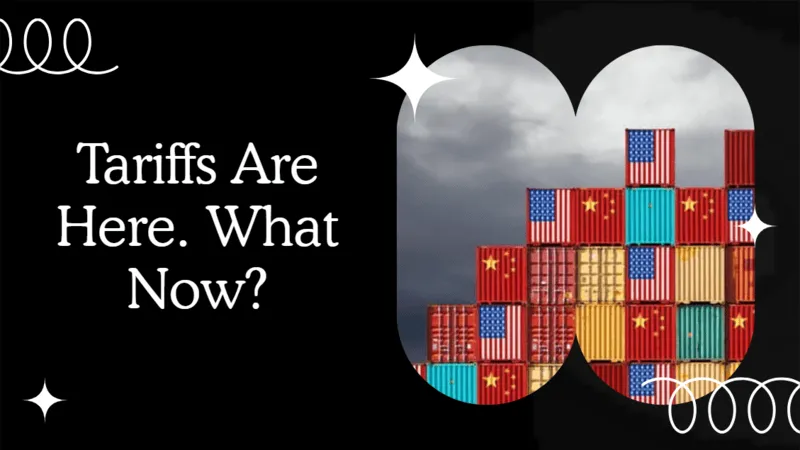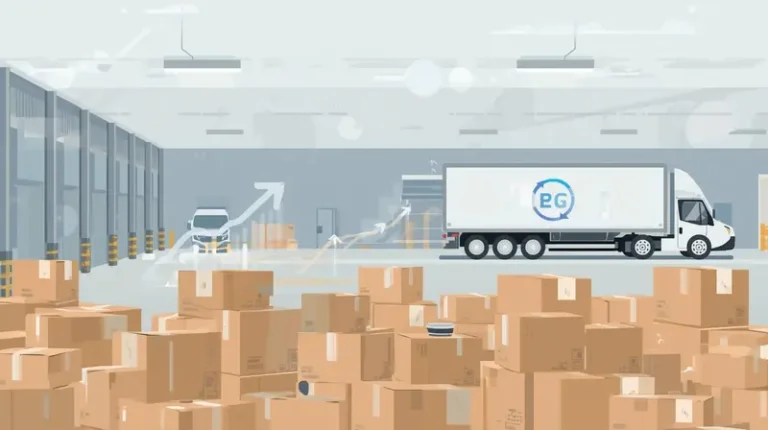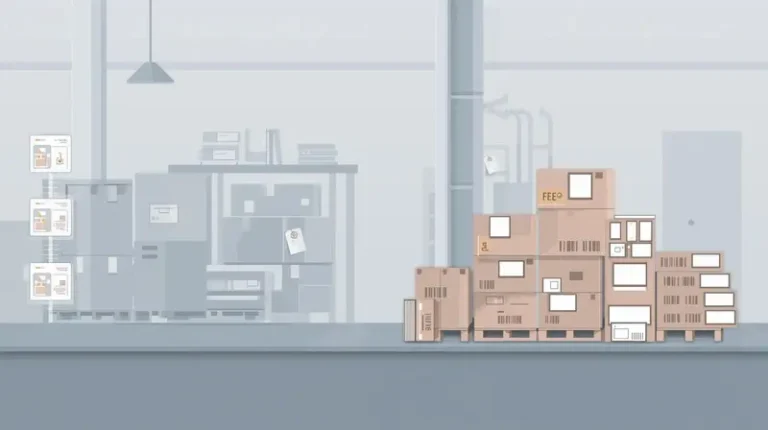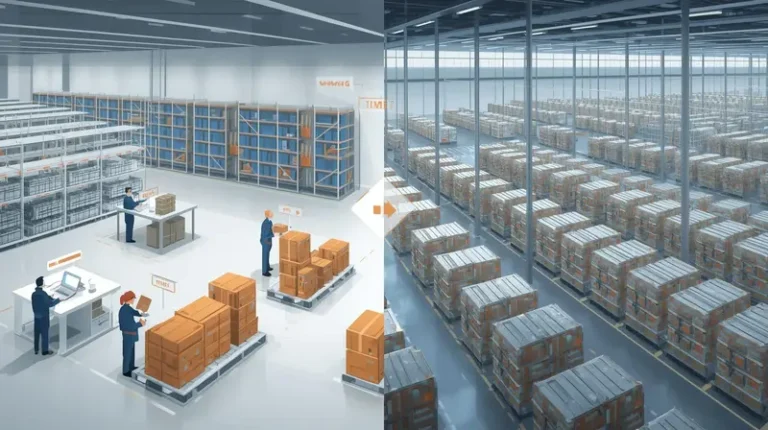Ecommerce Logistics: Tariffs Are Here. Now What? The Tough Logistics Decisions No One Wants to Talk About

Last updated on August 15, 2025

In this article
 7 minutes
7 minutes
Tariffs just blew up what we thought was normal in ecommerce logistics. Suddenly, supply chain planning isn’t a spreadsheet; it’s a survival game. If you’re an ecommerce business owner, brand operator, or logistics pro, buckle up. Ecommerce business owners, in particular, are facing new challenges in managing last-mile delivery and logistics management as the landscape shifts.
Man, it’s wild out here. One day, you’re cruising along with tight profit margins, seamless inventory management, and a fulfillment network humming along. The next? Tariffs land like a sucker punch. If you were hoping tariffs were just a maybe, you’re late to the party. They’re here.
Let me break it down, because right now, ecommerce logistics isn’t some nice-to-have optimization. It’s a battlefield.
Tariffs Aren’t Theory, They’re Real, and They’re Biting
Here’s the short version: effective August 2025, the U.S. slapped a patchwork of hefty tariffs across the board, on steel, copper, imports from Canada, Brazil, India, and more, where rates are now soaring up to 50% on sectors like appliances, copper, and consumer goods.
At the same time, the “de minimis” exemption, remember, that $800 threshold letting cheap imports slip through duty-free? It’s gone for good as of August 29. Every single international package now gets taxed or slapped with a flat fee of up to $200.
We’re seeing massive spikes in shipping costs, with shipping costs now a major factor impacted by the new tariffs, along with supply chain disruption and overall logistics operations chaos. The strain on the logistics network is affecting the flow of goods through ports and warehouses. Los Angeles and Long Beach ports shattered records in July, as importers raced to get freight in before the tariff cliff. Distribution centers are playing a critical role in managing the influx of inventory and supporting order fulfillment during these tariff changes.
Slash Your Fulfillment Costs by Up to 30%
Cut shipping expenses by 30% and boost profit with Cahoot's AI-optimized fulfillment services and modern tech —no overheads and no humans required!
I'm Interested in Saving Time and MoneyDo Layoffs and Price Hikes Sound Familiar?
KAVU, like many ecommerce brands, took a defensive posture. They delayed layoffs and held off on raising prices. But when tariffs hit, boom, margins cratered. Inflation isn’t just about the Fed; it’s about logistics bleeding profit through inflated costs, including rising warehousing costs. P&G hiked prices on essentials. Home electronics, veggies, and producer prices are climbing fast.
If you’re just cutting costs in a knee-jerk move, you might stall a little, but you’ll be toast sooner or later. Cost-cutting measures or logistical challenges can also negatively impact service quality, which in turn affects customer experience. You can’t fiscal-austerity your way into resilience.
Here’s the Real Opportunity: Act Proactively
Agility is the new profit lever. That’s where Cahoot steps in, because when boom-time logistics is over, the future is brands that flex fast, automate smarter, and dodge the worst before it hits. Adopting the right logistics strategies is now essential for adapting to tariff changes and maintaining a competitive edge.
Here’s what I’m telling brands:
- Run a tariff-impact audit on your supplier map, SKU by SKU. Tag where your supply chain is vulnerable to 10 %, 30 %, or 50 % duties, and assign risk scores. This is logistics strategy 101 now.
- Diversify or near-shore your sourcing. Stop relying on one region. Mexico, Southeast Asia, and even U.S.-based suppliers reduce landed cost and speed up delivery times and last-mile delivery. And yes, that improves customer experience and customer satisfaction, helping you meet customer expectations and enhancing customer satisfaction.
- Front-load compliant inventory where possible. If bestsellers aren’t tariff-exposed, lock ‘em in before lead times jump. That’s inventory management, efficient order fulfillment, and fulfillment process optimization, turned into a competitive edge.
- Flex fulfillment via Cahoot. Use peer-to-peer fulfillment, multiple fulfillment centers, and automation so you can reroute orders on a dime, optimize delivery routes, and lean on regional carriers when big ones spike. Modern fulfillment centers automate repetitive tasks to improve efficiency and accuracy. That’s shipping automation, modern ecommerce logistics in action. Choosing the right logistics provider is crucial for operational flexibility, and leveraging fulfillment services from an ecommerce logistics partner like Cahoot supports your ability to adapt quickly.
- Experiment with pricing transparency. No one trusts surprise hikes. Say: “Hey, costs are shifting globally, here’s what’s up, here’s how we’re keeping value solid.” That humanizes your ecommerce logistics strategy and protects your brand reputation.
- Simulate three clear scenarios: Full-blown tariff grind (worst case), partial rollback, or legal reversal. The law games are still being played. If you’re not modeling all three, you’re flying blind. Taking proactive action and maintaining agility with the right logistics strategies directly supports business growth and long-term success.
Why This Isn’t Just Another Crisis, It’s a Reset
Let’s get real: the ecommerce supply chain being disrupted is not a fluke. We’re in a reset; modern ecommerce logistics must be dynamic, transparent, enmeshed with automation, not manual firefighting. The logistics process is now a series of integrated activities, including inventory management, warehousing, order processing, shipping, and last-mile delivery, that must be optimized in this new environment. It’s a transformation from reactive to proactive.
Brands that cut costs hastily? Unfortunately, they’ll struggle with warehouse management system inefficiencies, reverse logistics slowdowns, delayed same-day delivery, and ultimately failing customer expectations. Poor decisions can also lead to customer dissatisfaction, especially when it comes to returns and delivery delays. The wrong moves now will haunt you next year.
But brands that lean into agility, optimizing logistics services, building fulfillment networks, smoothing order processing, triaging shipping costs, optimizing delivery routes, and enhancing customers’ doorstep experiences, they’ll emerge stronger and ensure customer satisfaction.
That’s not optimism, that’s the winning logician’s lens. Online businesses that leverage advanced logistics are not just delivering products; you’re delivering confidence, even when trade policy is trying to throw you off.
Looking for a New 3PL? Start with this Free RFP Template
Cut weeks off your selection process. Avoid pitfalls. Get the only 3PL RFP checklist built for ecommerce brands, absolutely free.
Get My Free 3PL RFPEcommerce Logistics, Summed Up
These key concepts encompass the full scope of ecommerce logistics, from managing online orders and inventory to leveraging fulfillment centers and third-party logistics (3PL) providers. As many ecommerce businesses and leading brands scale on major ecommerce platforms, technical expertise and real-time tracking become essential for efficient logistics operations and delivering products to the customer’s doorstep. Commerce logistics also includes inventory management, shipping discounts, and reverse logistics, all of which are critical for online retailers and online stores as the ecommerce business grows.
Quick Tactical Takeaways
- Tariffs are live. No waiting in the wings. The time to act is now.
- Set your logistics partner strategy around automation and flexibility, including selecting the right shipping carrier to optimize delivery speed, costs, and customer satisfaction.
- Diversify supply lanes. Near-shore when you can.
- Use Cahoot to flex fulfillment, re-route fast, and save last-mile margins.
- Lock in inventory smartly, especially non-tariffed SKUs.
- Communicate price shifts clearly with customers. That builds loyalty when supply chain chaos builds frustration.
Frequently Asked Questions
What is ecommerce logistics?
Ecommerce logistics refers to the planning, implementation, and control of the movement and storage of goods for online retail, from the supplier to the customer’s doorstep.
How do tariffs affect ecommerce supply chains?
Tariffs increase landed costs, disrupt established supplier relationships, and can lead to longer delivery times or higher prices for customers.
How can ecommerce businesses adapt to sudden supply chain disruptions?
Brands can diversify sourcing, leverage fulfillment centers in multiple regions, use third-party logistics partners, and optimize delivery routes to maintain cost efficiency and customer satisfaction.
What role does inventory management play in tariff resilience?
Managing inventory strategically, stocking high-margin, non-tariffed goods, and positioning them in regional fulfillment centers helps protect delivery speed and cost efficiency.
Why is agility important in modern ecommerce logistics?
Agility allows ecommerce businesses to pivot quickly when facing supply chain disruptions, meeting customer expectations, and safeguarding profitability.

Turn Returns Into New Revenue





